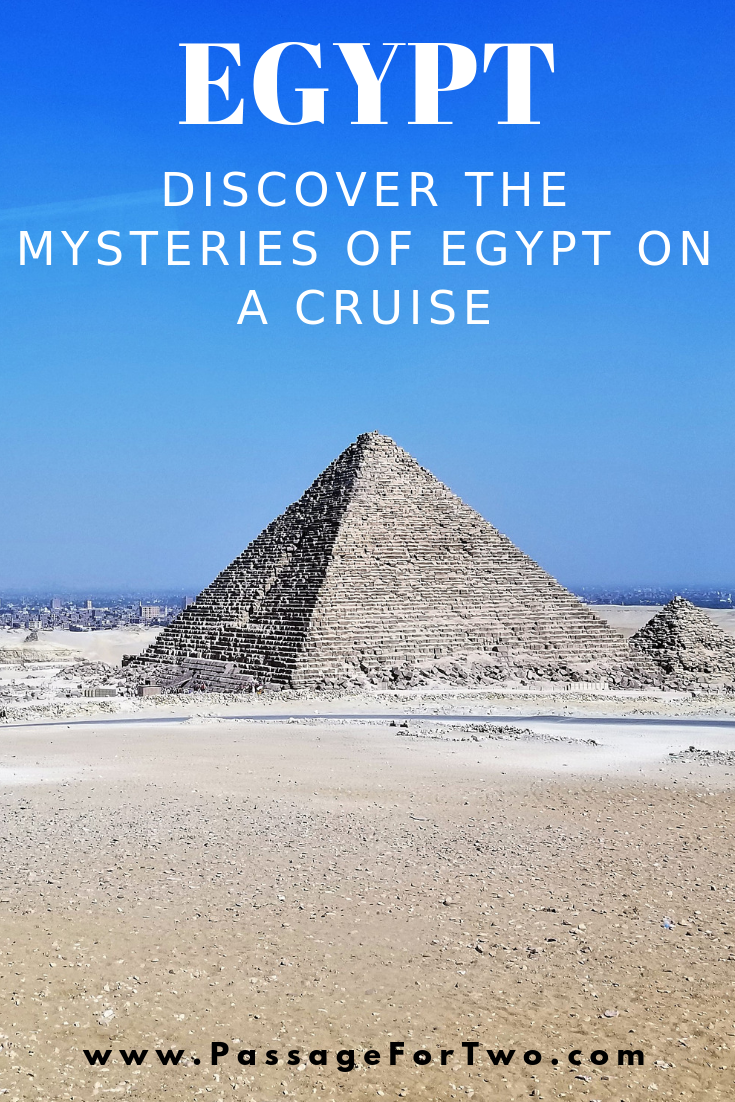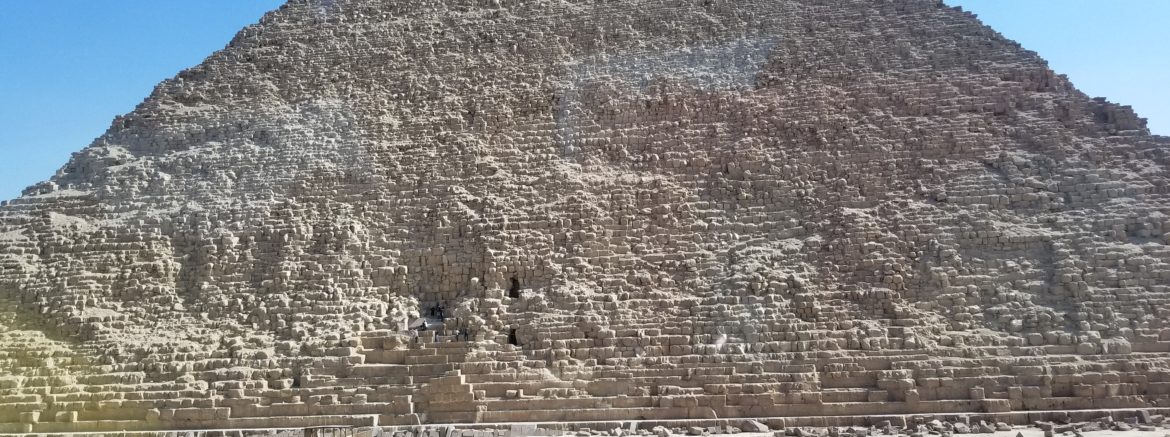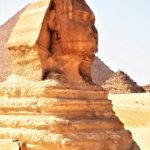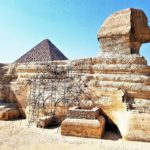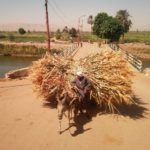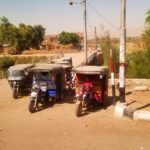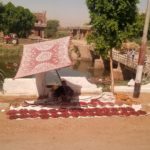Egypt Cruise – Port of Call
Sands of time have hidden the mysteries of Egypt over the centuries. Our Egypt Cruise visits these mysteries for four days. We get up close and personal with ancient civilizations, pharaohs, pyramids, kings, mummies and the Sphinx. Embarking our ship after touring Athens we head south for a quick visit to Israel before our Egypt cruise adventure. Our first stop is Cairo, home of the Pyramids of Giza. Then we depart the Mediterranean cruising south through the Suez Canal toward our next port of Luxor and the Temple of Karnak. The beach resort of Sharm el-Sheikh is our last stop in Egypt before heading for Jordan.
Cairo
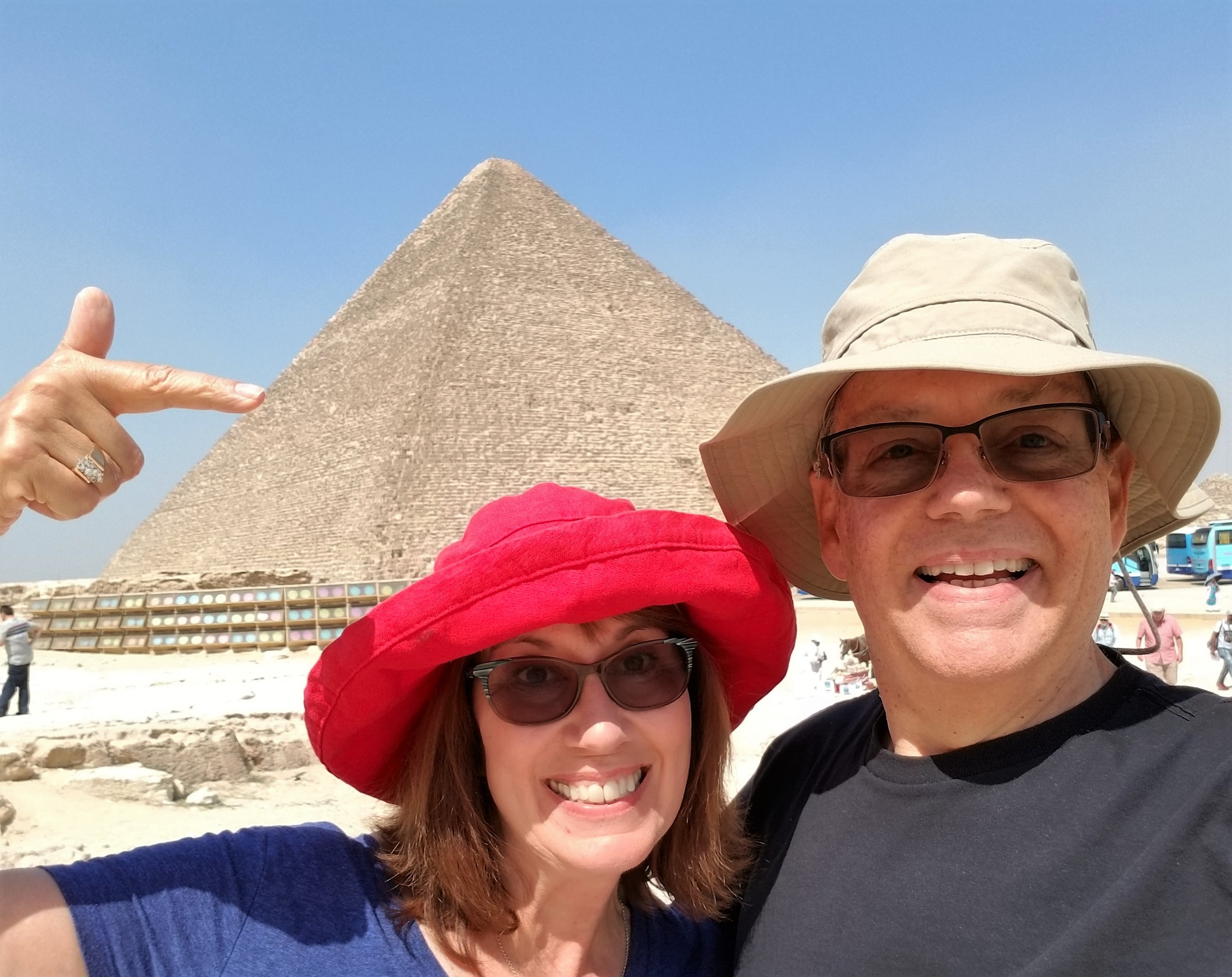 Caravans crossing the Sahara stop in Cairo, the capital of Egypt. Here the Nile river winds through this bustling city of nearly 20 million people. Driving through we are wide-eyed taking in the sights of one of the world’s mega-cities. We pass high rise tenements and private communities of million dollar homes revealing a stark contrast between these two worlds. A curve on the highway reveals a glimpse of the top of a pyramid between two high-rise building. We know we are close and the excitement builds as we approach the Pyramids of Giza.
Caravans crossing the Sahara stop in Cairo, the capital of Egypt. Here the Nile river winds through this bustling city of nearly 20 million people. Driving through we are wide-eyed taking in the sights of one of the world’s mega-cities. We pass high rise tenements and private communities of million dollar homes revealing a stark contrast between these two worlds. A curve on the highway reveals a glimpse of the top of a pyramid between two high-rise building. We know we are close and the excitement builds as we approach the Pyramids of Giza.
Pyramids of Giza
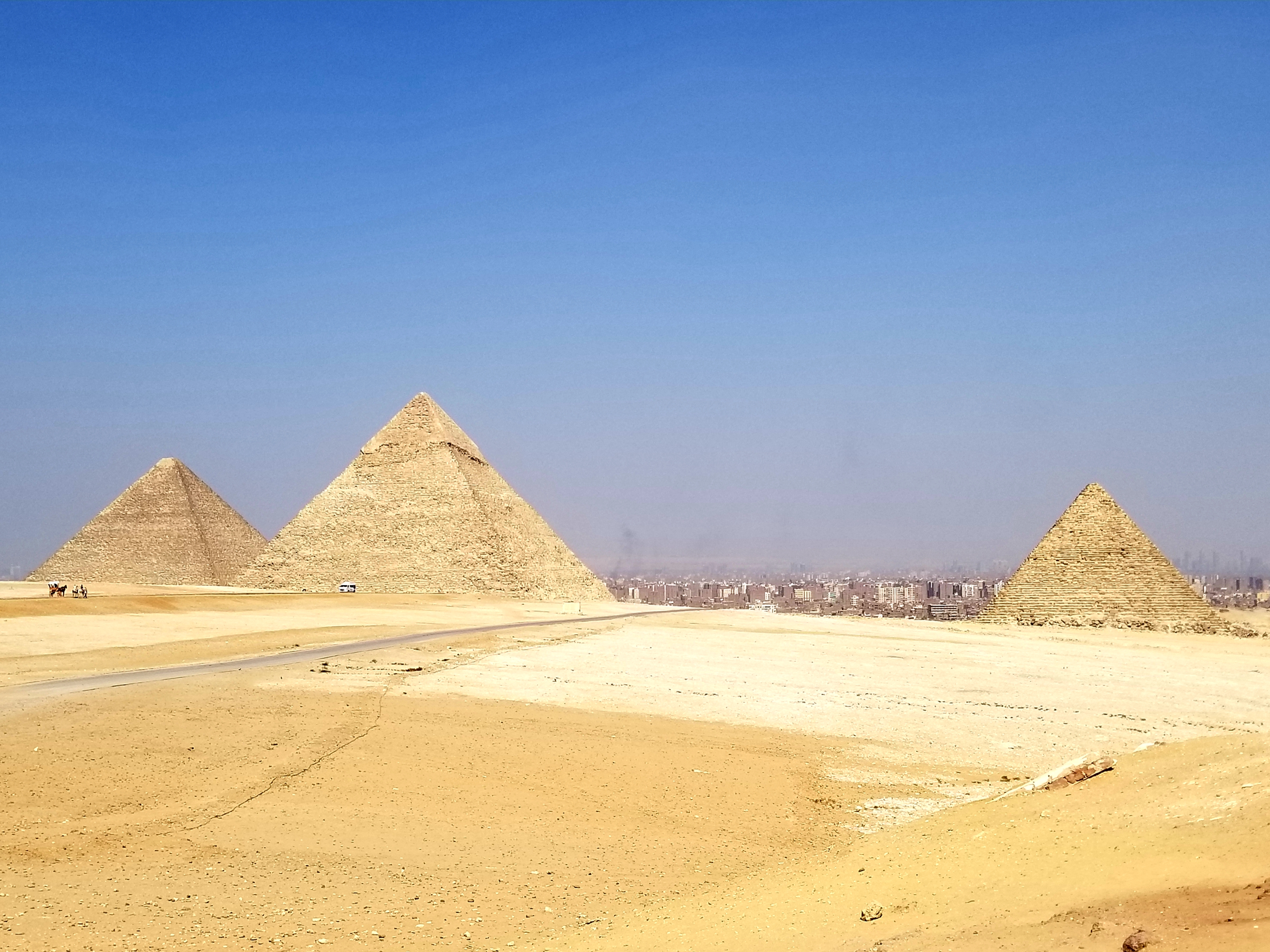
The Great Pyramids of Giza are perched atop the Giza Plateau. We are surprised plateau is a large open space surrounded by the city of Cairo. We had always pictured the pyramids being out in the middle of the desert. The largest of the three pyramids is The Great Pyramid of Giza also known as the Pyramid of Khufu. It is the oldest of the Seven Wonders of the Ancient World and also the only one that remains largely intact. It was built around 2560BC. We can hardly fathom this massive pyramid was built nearly 4600 years ago. It was the tallest man-made structure on earth for the next 3,800 years.
The three pyramids were built as tombs for three generations of pharaohs; Khufu, Khafre, and Menkaure, (grandfather, father and son). The father and grandson, Khafre and Menkaure pyramids are each smaller showing respect for their elder.
Approaching the pyramids is hard as they are surrounded by throngs of vendors selling souvenirs for ‘one dollar’. There are also camels with handlers offering pictures either in front of, or sitting on the camels. It becomes daunting moving through the vendors to get to the pyramids, but we achieve our goal reaching the pyramids.
Standing at the foot of the pyramids we are awestruck at the massive size and stature of the pyramid.
Sphinx
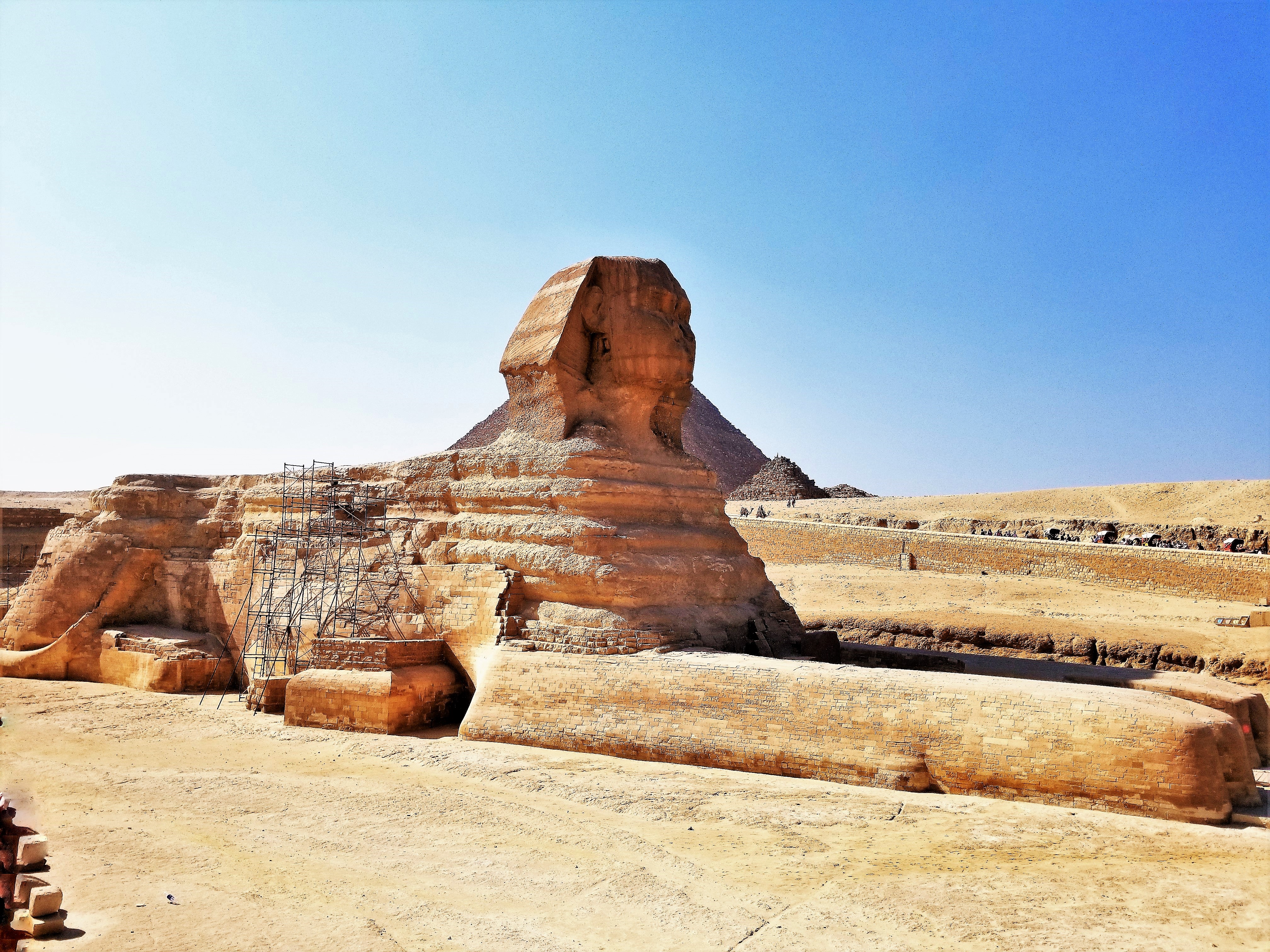 The Great Sphinx lays majestically standing watch at the edge of the Pyramid complex near what was an ancient harbor. The Nile River connected with the harbor and Sphinx complex 4500 years ago. This is how many of the stones and supplies for building the pyramids were transported to the area. Also near the harbor was a village for the worker and a necropolis complex where many of the workers are buried.
The Great Sphinx lays majestically standing watch at the edge of the Pyramid complex near what was an ancient harbor. The Nile River connected with the harbor and Sphinx complex 4500 years ago. This is how many of the stones and supplies for building the pyramids were transported to the area. Also near the harbor was a village for the worker and a necropolis complex where many of the workers are buried.
The Great Sphinx was carved from a single rock. He is a mythical creature having a human head on the body of a lion. The head is believed to be of the Pharaoh Khafre and who the middle of the Great Pyramids was built for.
Suez Canal
Moving from Northern Egypt in the Mediterranean to Southern Egypt we cruise the 120 miles through the Suez Canal. Built in the 1860s to connect the Mediterranean and the Red Sea. It eliminates the former 7,000 mile journey around Africa and provides a major benefit to shipping goods and merchandise. Currently only about 50 ships traverse the canal each day.
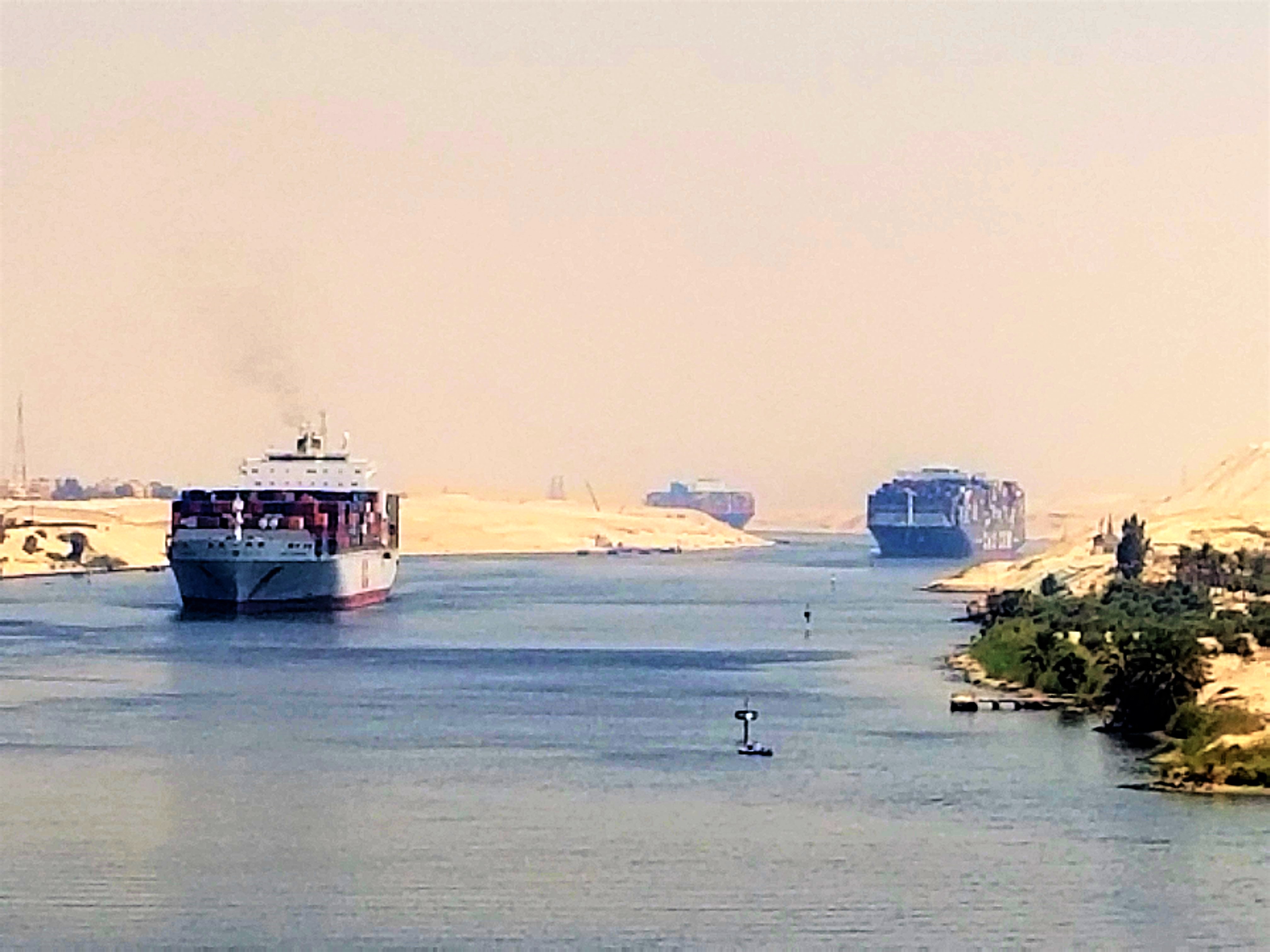 Sailing through the canal is not terribly picturesque. It is a narrow waterway with sand banks on both sides. It reminds us very much of being on a delta river back home in Northern California. Nothing much to see in the Suez except sand as far as the eye can see.
Sailing through the canal is not terribly picturesque. It is a narrow waterway with sand banks on both sides. It reminds us very much of being on a delta river back home in Northern California. Nothing much to see in the Suez except sand as far as the eye can see.
What was interesting was that ships only sail once each day in a convey with each ship about a mile apart. Ships sailing South as we are enter the canal in a per-assigned order around 6:00 AM. Ships traveling North begin their journey at the same time. The ships stay in line and can not pass. The North and Southbound convoys pass one another mid-day at Bitter Lake, a large body of water near the center of the canal.
Luxor
Luxor is the Ancient Egyptian city of Thebes and has been described as the “world’s greatest open-air museum”. The two temple complexes at Karnak and Luxor are part of the modern city. Across the Nile River there are monuments, temples and tombs that form the West Bank Necropolis. These include the Valley of the Kings and Valley of the Queens.
Temple of Karnak
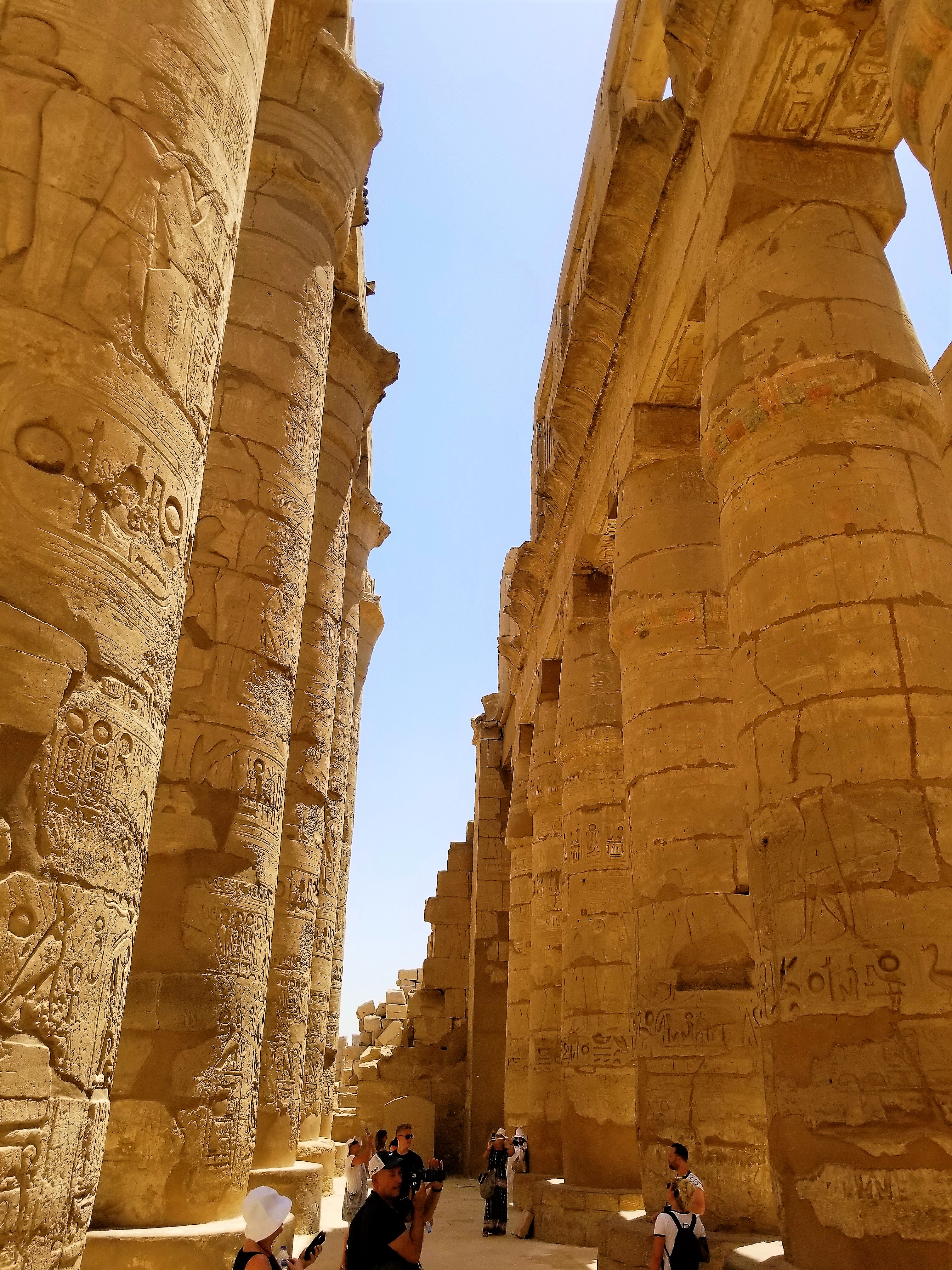 Walking in the footsteps of the Pharaohs we visited the Temple of Karnak at Luxor. Built to honor Amun-Re, the Sun God. This was appropriate with temperatures in the desert reaching 106°f with no shade.
Walking in the footsteps of the Pharaohs we visited the Temple of Karnak at Luxor. Built to honor Amun-Re, the Sun God. This was appropriate with temperatures in the desert reaching 106°f with no shade.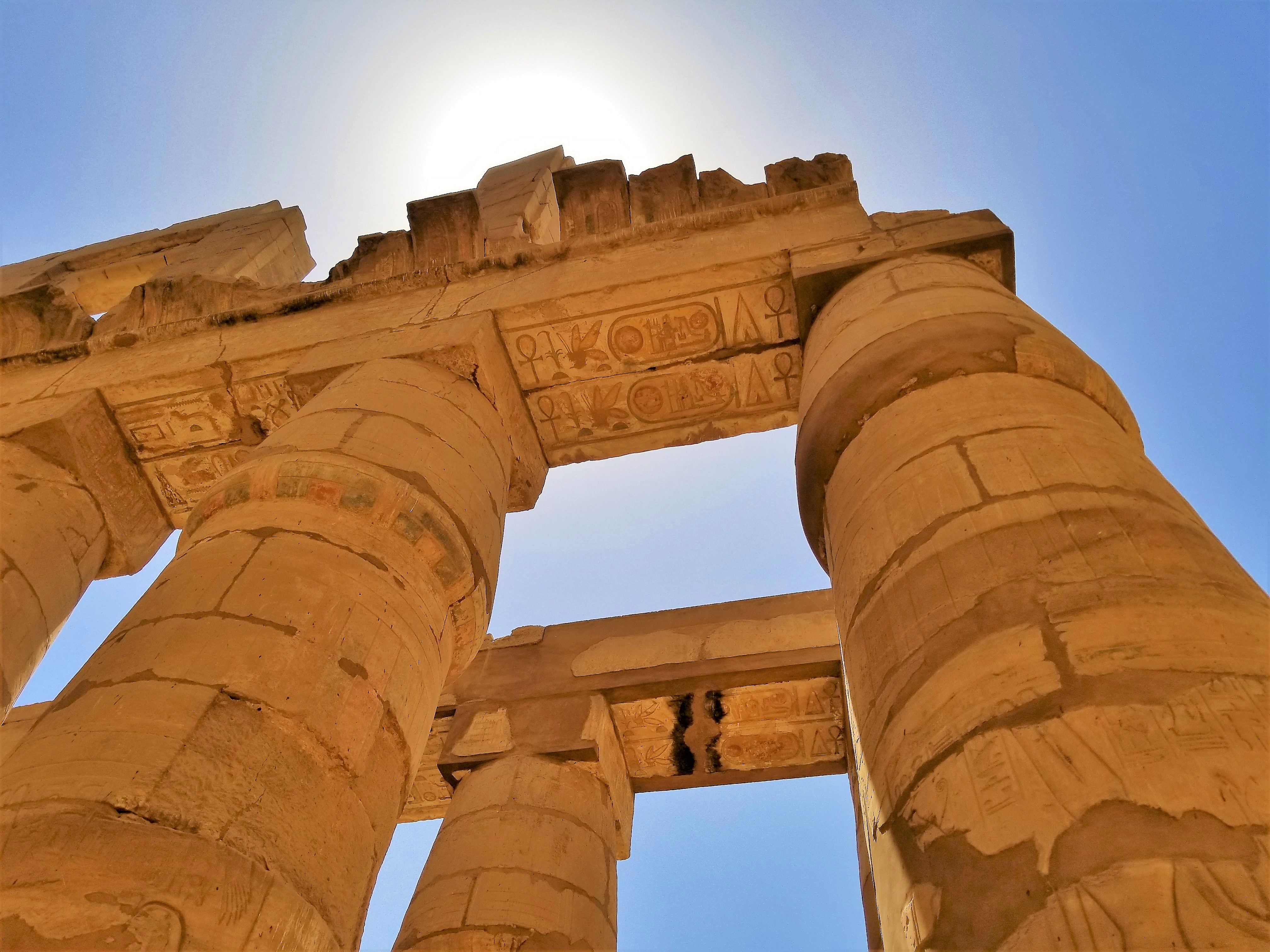
Karnak is believed to be the largest religious temple in the ancient world. Built by Senusret I a Pharaoh that ruled between 1971 BC to 1926 BC, with over 30 subsequent Pharaohs adding to the Temple complex to garner favor from Amun-Re the Sun God. But we also heard that recent excavations are beginning to indicate the site may date back to 3500BC.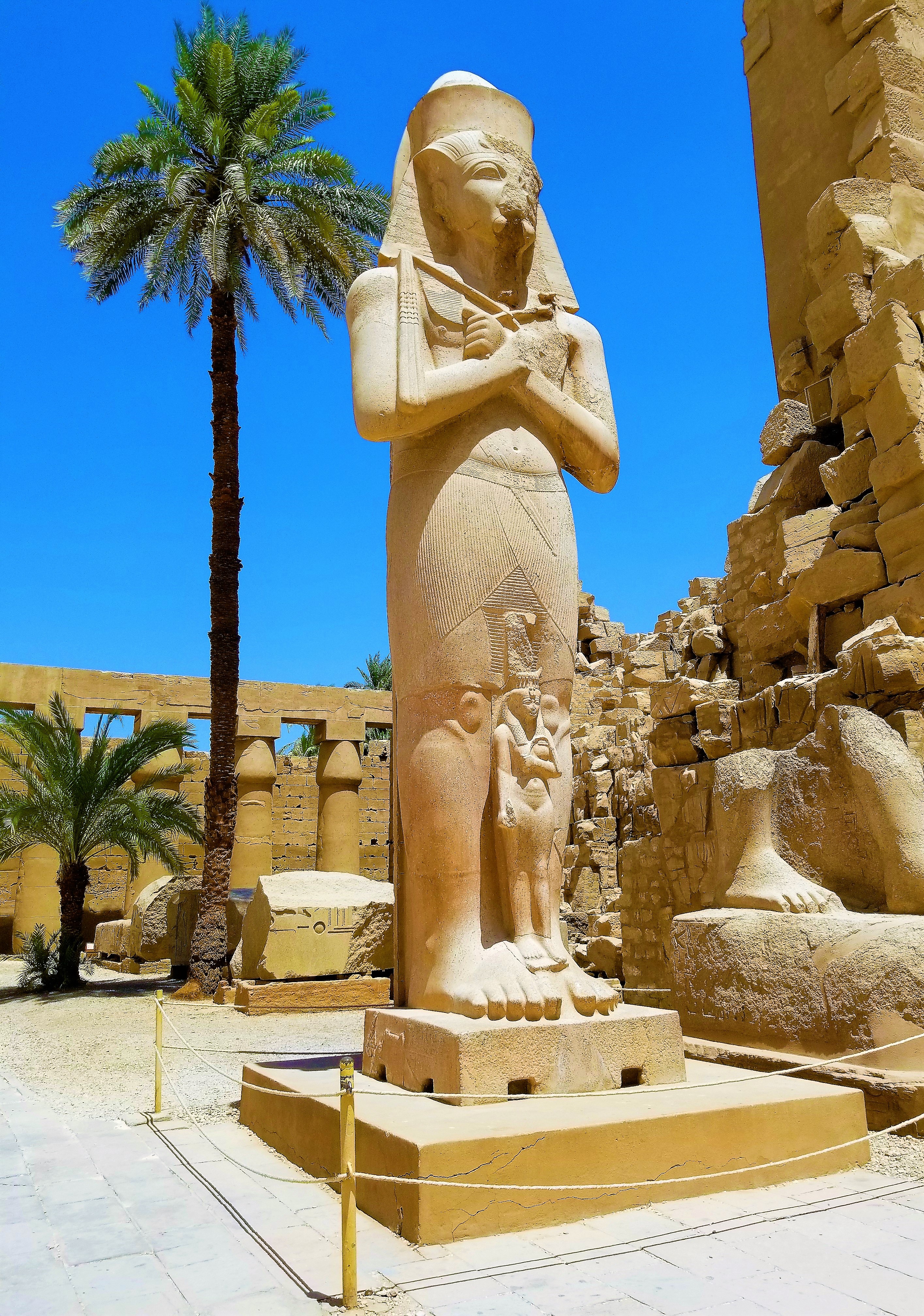
As we approach there are large reclining statues line both sides of the walk leading into the Temple of Karnak. The half lion bodies with a Ram head statues lines a 2.5 kilometer path leading to the Temple.
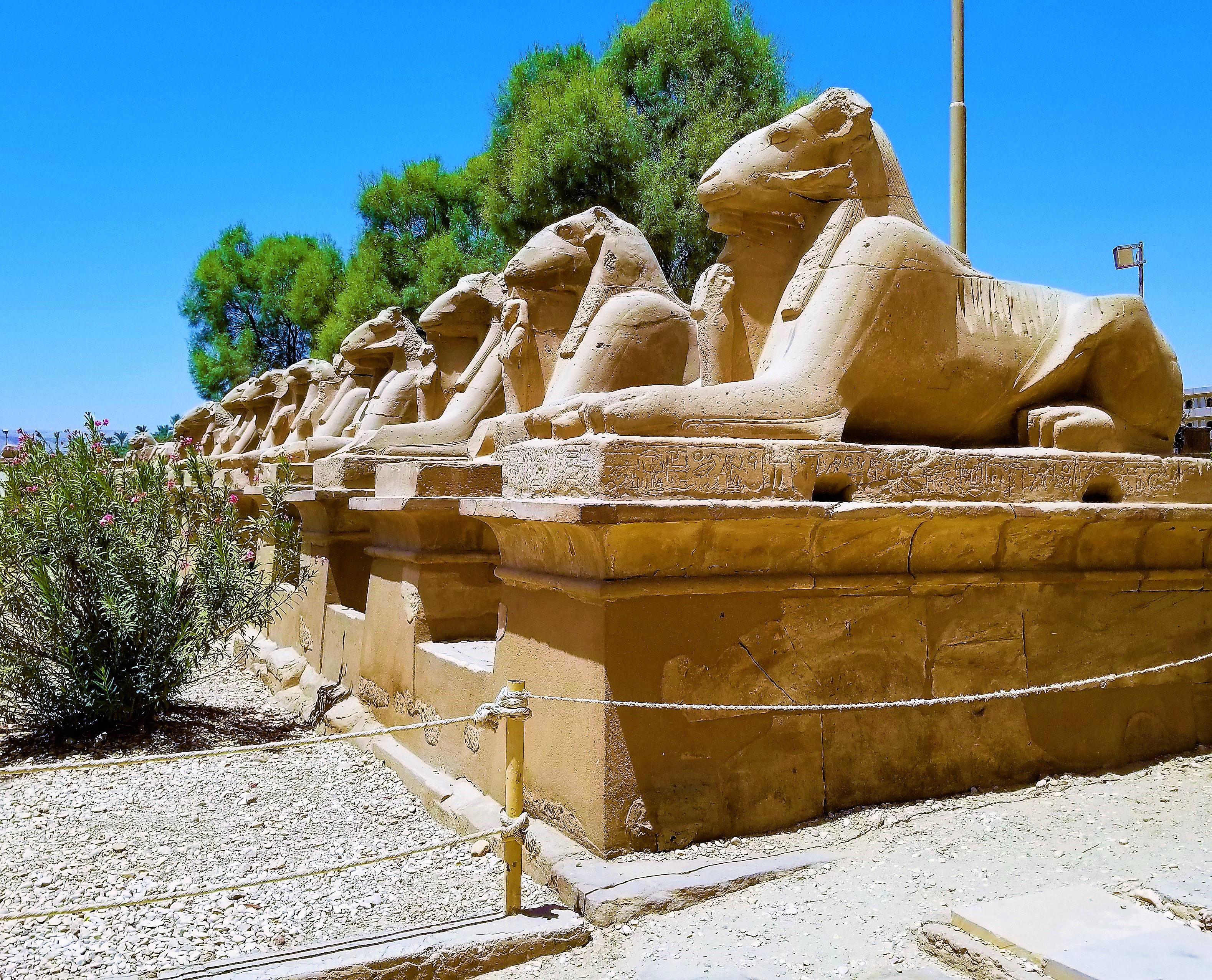 The main temple has 134 pillars and is so big it could hold 16 Basilicas inside. Each pillar is 96 feet tall. We felt dwarfed walking among them. Every surface is covered with hieroglyphics telling stories from Egypt’s ancient past.
The main temple has 134 pillars and is so big it could hold 16 Basilicas inside. Each pillar is 96 feet tall. We felt dwarfed walking among them. Every surface is covered with hieroglyphics telling stories from Egypt’s ancient past.
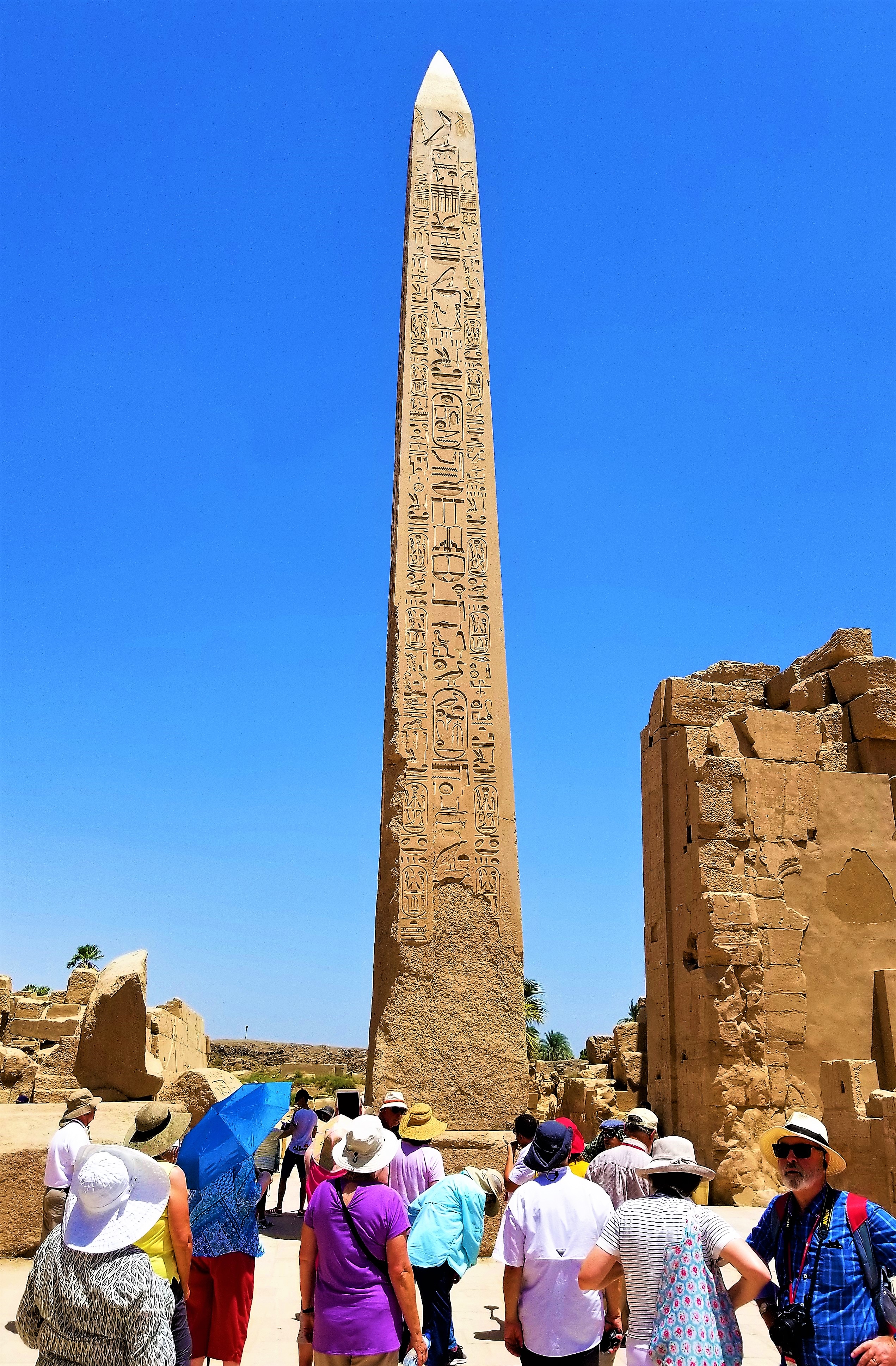 An 97 foot tall obelisk weighing approximately 320 tons was erected by Queen Hatshepsut (1473 -1458 BC). Carved from a single piece of stone, we are in awe at how this was done, and the obelisk moved into place without the use of modern cranes.
An 97 foot tall obelisk weighing approximately 320 tons was erected by Queen Hatshepsut (1473 -1458 BC). Carved from a single piece of stone, we are in awe at how this was done, and the obelisk moved into place without the use of modern cranes.
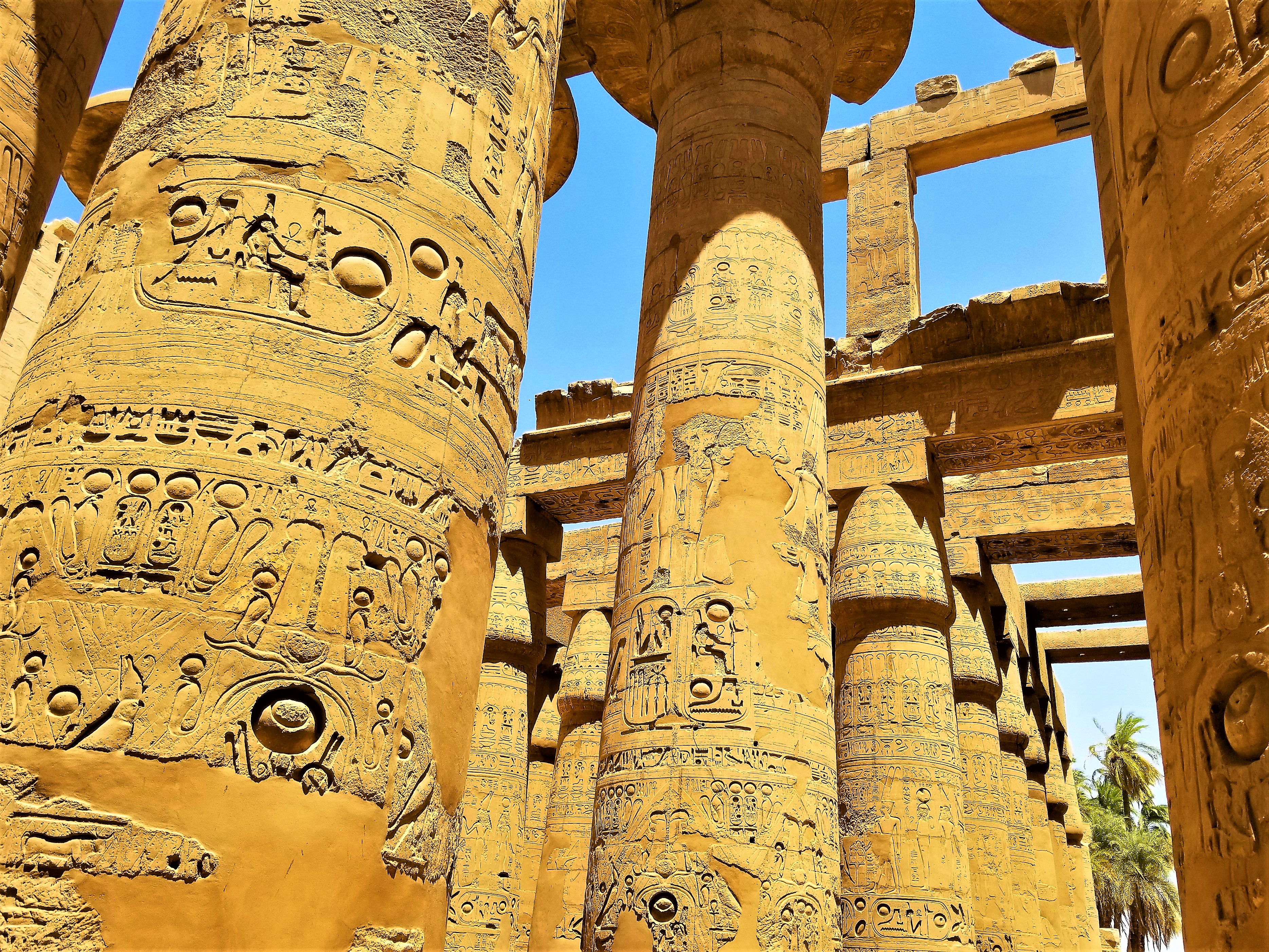 The temple is covered in hieroglyphics that have survived the test of time.
The temple is covered in hieroglyphics that have survived the test of time.
The Road to Luxor
The road to Luxor from our port in Safaga is a long highway through the desert lined by moonscape like mountains. Every so often we see a random house or building and wonder why it would be built here. Most of these look deserted, some are in advanced states of decay and ruin. We understand why someone would have abandoned living in the middle of nowhere long ago.
The 3 1/2 hour drive from Safaga to Luxor took us past many small villages that we were told were typical of life in Egypt outside of the big cities. We enjoyed seeing donkey drawn carts, tuk tuks, and people going about every day life. We even think we saw a small crocodile in a roadside canal.
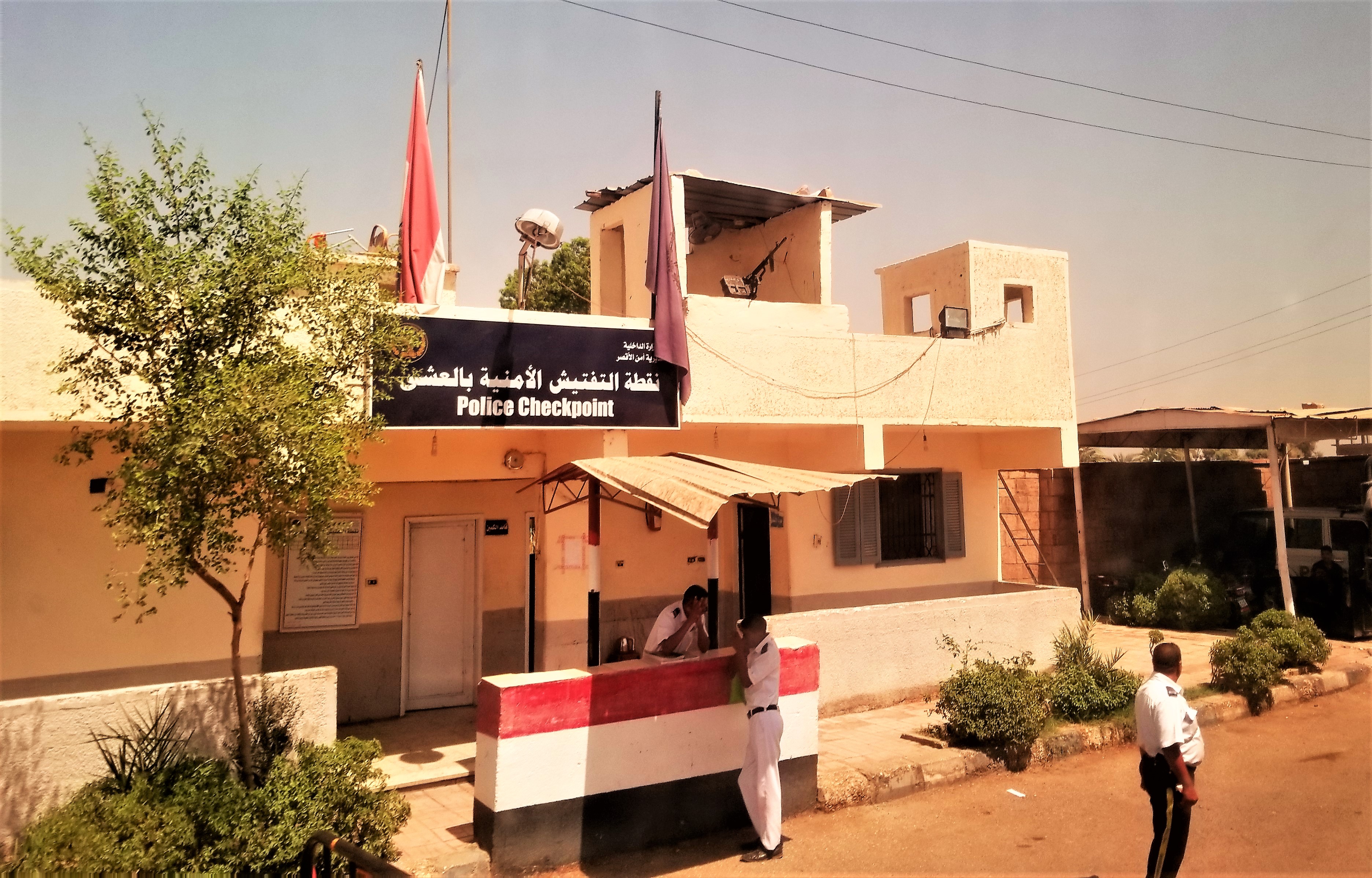 Surprisingly, there are numerous police checkpoints along the highway. These outposts appear about every ten miles and are staffed with four to eight uniformed officers. We see machine-gun nests atop the checkpoints. Even though we ask, our guide just responds these are to insure our safety. We continue to wonder, ‘our safety from what’, or more accurately – who?
Surprisingly, there are numerous police checkpoints along the highway. These outposts appear about every ten miles and are staffed with four to eight uniformed officers. We see machine-gun nests atop the checkpoints. Even though we ask, our guide just responds these are to insure our safety. We continue to wonder, ‘our safety from what’, or more accurately – who?
Village Life
The highway ran along side an irrigation canal to bring water for farming to this area from the Nile River. There were many small settlements of villages on the other side of the irrigation canal accessible by small bridges. Stationed at each bridge was a man in regular clothes with a rifle. It was explained we would see many people along our drive with guns, and these people we police.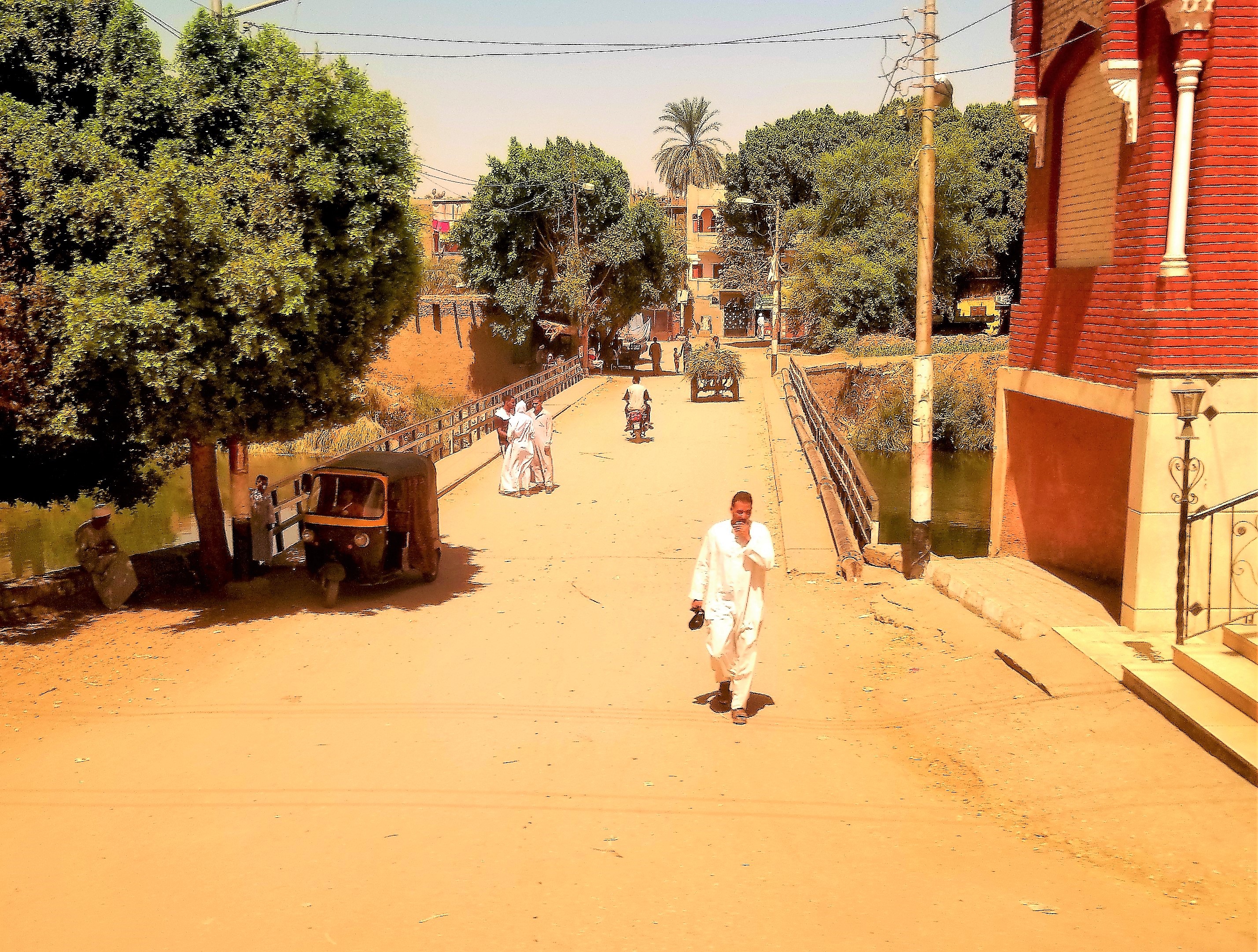
We also saw many tuk tuks waiting at the highway ready to carry people into the village. We were surprised to see many young boys that appeared to be 8 – 10 years old operating the tuk tuks. Donkey drawn carts and wagons hauling crops where also commonplace.
Writings From the Ancient World
We attended a fascinating talk aboard our ship: “The Egyptians of the Pyramid Age in Their Own Words.” In this presentation, Egyptologist Nigel Strudwick explained just enough about hieroglyphs to make us dangerous and then entertained us by providing us with examples that demonstrate how very similar and relatable life in ancient Eqypt might have been.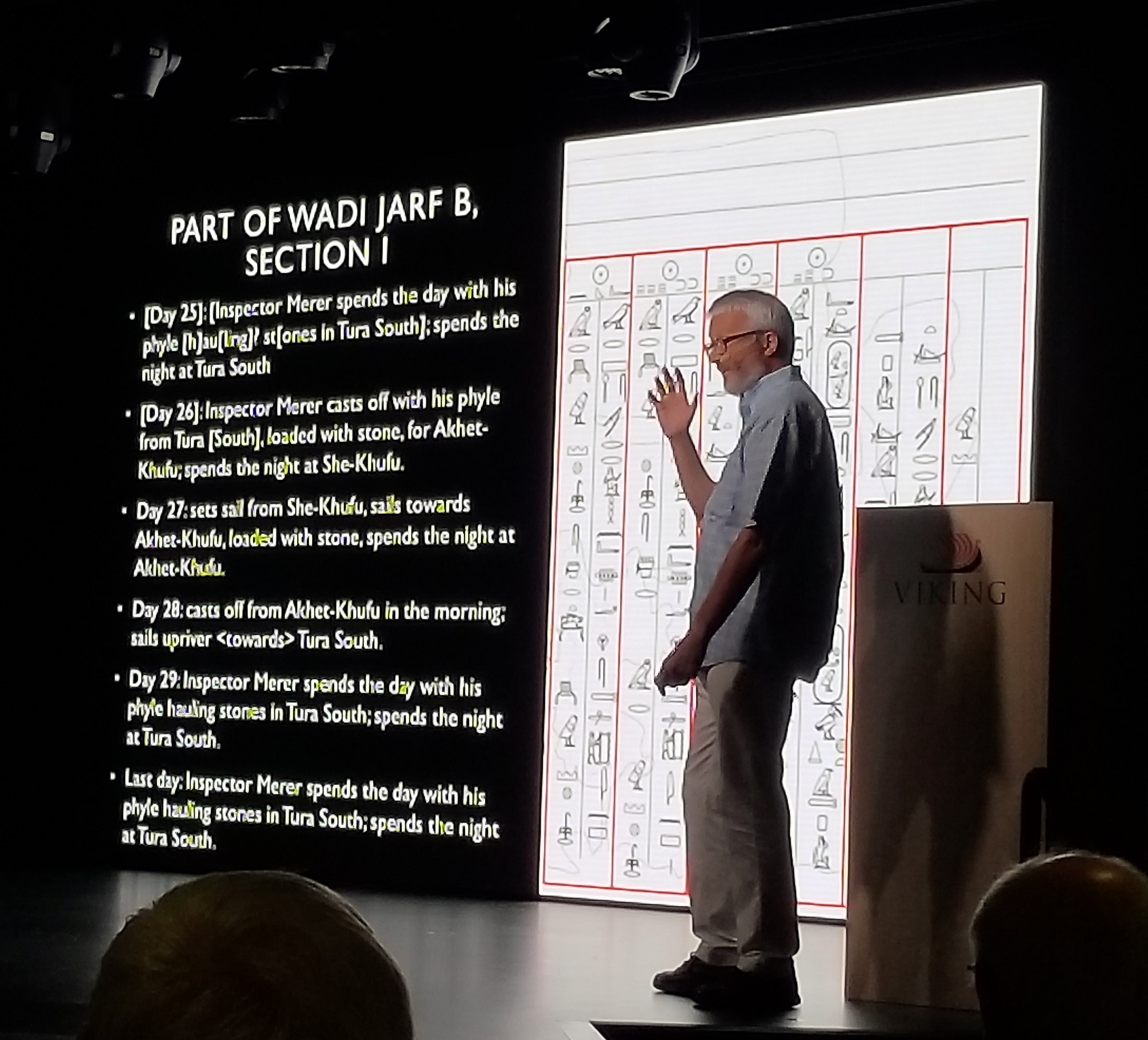
Understanding Hieroglyphs
1. Hieroglyphs are characters that represent the sound that a letter makes. The letter “b” is represented by a boot for example.
2. Hieroglyphs were written both left to right and right to left. Very confusing! To figure out which direction to read in you need only note whether the characters point left or right — If the bird’s beak is pointing left, then you read the characters left to right. If the bird’s beak is pointing right, the characters are read right to left. Sounds pretty simple, right?
3. Not all hieroglyphs were carved in stone. Some were written hastily with brushes on papyrus (paper) with joined (cursive) symbols and abbreviations making them harder to decipher.
Pyramid of Saqqara
4. In 2013 a stash of papyrus writings were found in a step pyramid in Saqqara and deciphered. The writings really illuminate how the great pyramids were constructed, and how the work was actually organized and administered. Among these writings are material delivery invoices, complaints about late vendors, and duty rosters. From this we can imagine how the ancient Eqyptians built the Pyramids and dealt with the same day-to-day operational tasks we confront in modern times…except no email
Sharm el-Sheikh
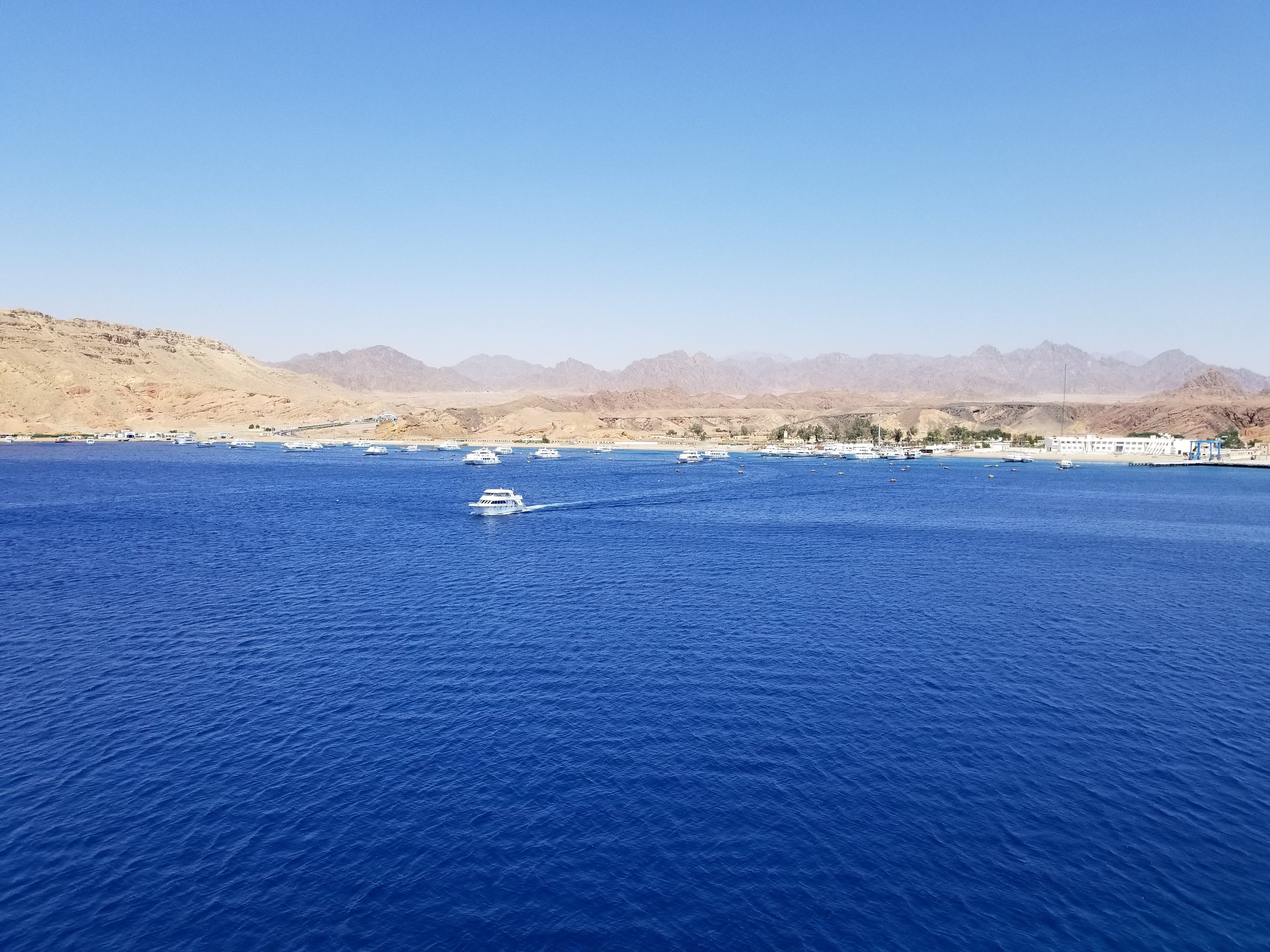 Sharm el-Sheikh is an Egyptian resort town between the desert of the Sinai Peninsula and the Red Sea. It’s known for its sheltered sandy beaches, clear waters and coral reefs. Naama Bay, with a palm tree-lined promenade, is filled with bars and restaurants. Known by locals as “Sharm” is best described as a resort beach town with long inviting white sand beaches with lots of waters sports and activities. Sun bathing, glass bottom boats, snorkeling and scuba driving are all fun options for a day in this port of call.
Sharm el-Sheikh is an Egyptian resort town between the desert of the Sinai Peninsula and the Red Sea. It’s known for its sheltered sandy beaches, clear waters and coral reefs. Naama Bay, with a palm tree-lined promenade, is filled with bars and restaurants. Known by locals as “Sharm” is best described as a resort beach town with long inviting white sand beaches with lots of waters sports and activities. Sun bathing, glass bottom boats, snorkeling and scuba driving are all fun options for a day in this port of call.
Like this? Share it on Pinterest. . .
